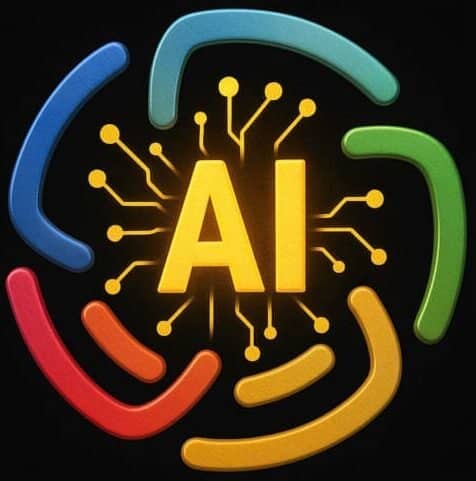In the pumps and pipe industry, efficiency and precision are paramount. GPT Prompts used in Custom GPTs can significantly streamline technical workflows, reduce documentation time, and improve decision-making accuracy. This guide provides 10 carefully crafted prompts specifically designed for pumps and pipe professionals that can be used with ChatGPT or specialized GPTs from OneDayOneGPT to solve everyday industry challenges.

1. Pump Selection Criteria Analyzer
As a pump engineering assistant, help me select the appropriate pump type for a system with the following parameters:
- Flow rate: [X] m³/hour
- Total head: [X] meters
- Fluid: [type e.g., water, oil, slurry]
- Temperature range: [X-Y] °C
- Viscosity: [X] cP
- Solid content: [X%]
- NPSH available: [X] meters
- Application: [e.g., water transfer, chemical processing]
Provide recommendations for suitable pump types with reasoning, key specifications to consider, potential challenges, and manufacturers I should explore.
2. Pipe System Troubleshooting Guide
I’m experiencing [specific issue e.g., cavitation, excessive vibration, reduced flow] in a pumping system with the following components:
- Pump type: [centrifugal, positive displacement, etc.]
- Pipe material: [PVC, steel, copper, etc.]
- System age: [X years]
- Recent changes: [if any]
- Operating conditions: [pressure, temperature, flow rate]
- Observed symptoms: [detailed description]
Provide a systematic troubleshooting approach, potential causes ranked by likelihood, diagnostic tests I should perform, and possible solutions.
3. Preventive Maintenance Schedule Generator
Create a comprehensive preventive maintenance schedule for:
- System: [e.g., industrial water pumping station, wastewater treatment]
- Equipment: [list key components: pumps, valves, pipes, seals, etc.]
- Operating conditions: [hours/day, environment, fluid properties]
- Critical importance: [high/medium/low]
- Regulatory requirements: [any specific standards]
Include inspection frequencies, lubrication schedules, parts replacement intervals, recommended testing procedures, and documentation requirements. Format as a spreadsheet-ready schedule with notification timing.
4. Material Compatibility Analyzer
Analyze material compatibility for a piping system with these parameters:
- Fluid: [chemical composition or properties]
- Operating temperature: [X-Y] °C
- Operating pressure: [X] bar
- pH level: [if applicable]
- Flow characteristics: [continuous, intermittent, etc.]
- Environmental factors: [exposure conditions]
- Expected service life: [X years]
- Budget constraints: [if applicable]
Provide recommendations for pipe materials, gasket selections, valve materials, and connection types with advantages and disadvantages of each option.
5. Pump Efficiency Optimization Analysis
Help me optimize the efficiency of a pumping system with these specifications:
- Current pump: [make, model, specifications]
- System curve details: [provide if available]
- Current operating point: [flow rate, head, power consumption]
- Energy costs: [$/kWh]
- Operating hours: [per day/week]
- System constraints: [minimum flow requirements, etc.]
Analyze potential efficiency improvements including: operating point adjustments, VFD implementation, impeller trimming, pump replacement ROI, and system modifications. Calculate estimated energy savings and payback periods for each option.
6. Regulatory Compliance Documentation Generator
Create regulatory compliance documentation for a [type] pumping system in [location/jurisdiction] covering:
- System description: [brief description]
- Applicable regulations: [if known, otherwise specify industry]
- Hazardous materials involved: [if any]
- Safety considerations: [specific concerns]
- Installation environment: [indoor/outdoor, proximity to sensitive areas]
Generate a compliance checklist, required documentation list, testing procedures, certification requirements, and ongoing compliance monitoring protocols.
7. Technical Specification Sheet Generator
Create a comprehensive technical specification sheet for a [type] pump/piping system with:
- Performance requirements: [flow rates, pressures, temperatures]
- Physical constraints: [space limitations, connection types]
- Materials of construction: [requirements or preferences]
- Control requirements: [manual, automated, integration needs]
- Environmental considerations: [indoor/outdoor, hazardous area, noise]
- Maintenance accessibility: [requirements]
- Spare parts requirements: [critical spares, lead times]
Format in a professional layout suitable for inclusion in procurement documentation.

8. Installation Cost Estimator
Generate a detailed cost estimate for installing a [type] pumping system with:
- Equipment list: [pumps, pipes, valves, instrumentation]
- Installation location: [region/country]
- Labor market: [union/non-union, skill availability]
- Site conditions: [greenfield/brownfield, access limitations]
- Timeline requirements: [standard/expedited]
- Special requirements: [certifications, testing, documentation]
Break down costs by equipment, materials, labor, engineering, testing, and contingency. Include typical ranges and factors that could impact final costs.
9. Hydraulic System Analysis Assistant
Analyze a pumping system with these characteristics:
- Pipe layout: [describe configuration, lengths, elevations]
- Pipe sizes and materials: [details of various sections]
- Fittings and valves: [types and quantities]
- Flow requirements: [rates, patterns]
- Pump specifications: [if selected]
Calculate head losses, identify potential pressure issues, recommend optimization opportunities, and validate pump selection (or recommend specifications if not yet selected).
10. Technical Training Material Creator
Create training materials for [specific audience – operators, maintenance staff, engineers] on [topic – pump operation, maintenance procedures, troubleshooting] covering:
- Key concepts and terminology
- Step-by-step procedures
- Common mistakes and how to avoid them
- Safety considerations
- Hands-on exercises or assessment questions
- Visual aids descriptions
Format as a structured training module with clear learning objectives and assessment metrics.
Conclusion on GPT Prompts
These 10 GPT Prompts are just the beginning of how custom GPTs can transform workflows in the pumps and pipe sector. By integrating these AI tools into daily operations, professionals can save significant time on routine tasks while improving decision quality and documentation.
For even more specialized capabilities, explore OneDayOneGPT’s collection of over 1,000 custom GPTs, including several specifically designed for engineering, maintenance, and industrial applications. The free tier offers access to over 50 GPTs to get you started immediately.
Ready to transform your pumping systems workflow? Start using these prompts today with ChatGPT, or for more advanced capabilities, visit onedayonegpt.tech to access industry-specific custom GPTs.
External Resources
- https://www.steelavailable.com/en/how-artificial-intelligence-can-power-the-piping-industry/
- https://press.siemens.com/global/en/pressrelease/siemens-expands-industrial-copilot-new-generative-ai-powered-maintenance-offering
- https://fluidhandlingpro.com/abb-simplifies-industrial-device-maintenance-with-generative-ai/
- https://www.publicissapient.com/insights/maintenance-co-pilot
- https://numalis.com/ai-in-water-sewerage-and-waste-management/
Related Resources
- AI Assistants and Demand Planning: How Intelligent Assistants Are Transforming Supply Chain Resilience
- AI Assistants for SMEs: Use Cases, ROI & Strategy Guide
- 7 Essential Business AI Assistants for ChatGPT Enterprise
- AI Assistants Implementation: Insights for ChatGPT Integration
- AI Business Case Studies: Success Stories with ChatGPT
